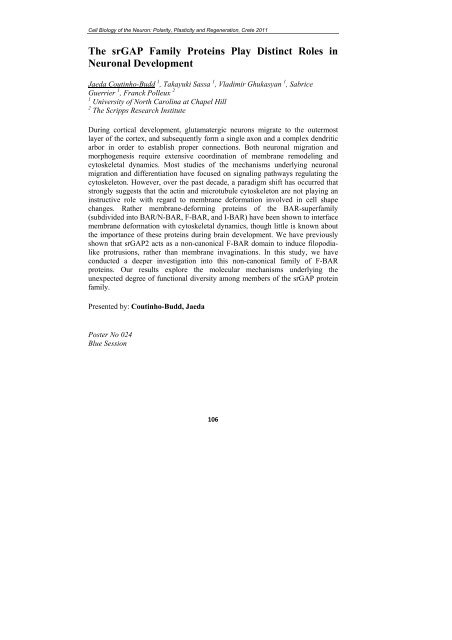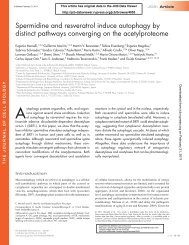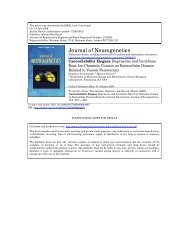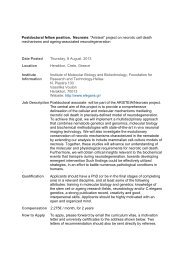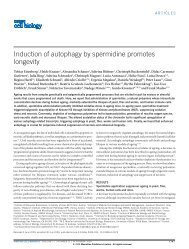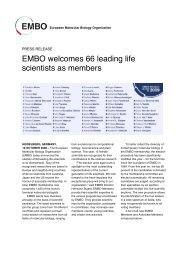CELL BIOLOGY OF THE NEURON Polarity ... - Tavernarakis Lab
CELL BIOLOGY OF THE NEURON Polarity ... - Tavernarakis Lab
CELL BIOLOGY OF THE NEURON Polarity ... - Tavernarakis Lab
Create successful ePaper yourself
Turn your PDF publications into a flip-book with our unique Google optimized e-Paper software.
Cell Biology of the Neuron: <strong>Polarity</strong>, Plasticity and Regeneration, Crete 2011<br />
The srGAP Family Proteins Play Distinct Roles in<br />
Neuronal Development<br />
Jaeda Coutinho-Budd 1 , Takayuki Sassa 1 , Vladimir Ghukasyan 1 , Sabrice<br />
Guerrier 1 , Franck Polleux 2<br />
1 University of North Carolina at Chapel Hill<br />
2 The Scripps Research Institute<br />
During cortical development, glutamatergic neurons migrate to the outermost<br />
layer of the cortex, and subsequently form a single axon and a complex dendritic<br />
arbor in order to establish proper connections. Both neuronal migration and<br />
morphogenesis require extensive coordination of membrane remodeling and<br />
cytoskeletal dynamics. Most studies of the mechanisms underlying neuronal<br />
migration and differentiation have focused on signaling pathways regulating the<br />
cytoskeleton. However, over the past decade, a paradigm shift has occurred that<br />
strongly suggests that the actin and microtubule cytoskeleton are not playing an<br />
instructive role with regard to membrane deformation involved in cell shape<br />
changes. Rather membrane-deforming proteins of the BAR-superfamily<br />
(subdivided into BAR/N-BAR, F-BAR, and I-BAR) have been shown to interface<br />
membrane deformation with cytoskeletal dynamics, though little is known about<br />
the importance of these proteins during brain development. We have previously<br />
shown that srGAP2 acts as a non-canonical F-BAR domain to induce filopodialike<br />
protrusions, rather than membrane invaginations. In this study, we have<br />
conducted a deeper investigation into this non-canonical family of F-BAR<br />
proteins. Our results explore the molecular mechanisms underlying the<br />
unexpected degree of functional diversity among members of the srGAP protein<br />
family.<br />
Presented by: Coutinho-Budd, Jaeda<br />
Poster No 024<br />
Blue Session<br />
106


